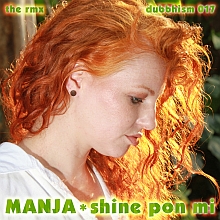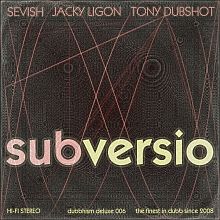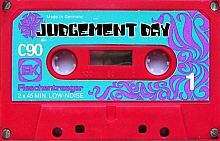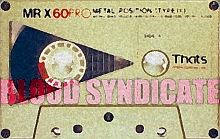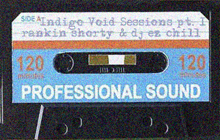
This is our second post about the astrologer Theodor Landscheidt, who proposes that the Golden Ratio (or Φ) plays an important role in the physical stabilization of our solar system. He also proposes that the Golden Ratio has an astrological meaning related to stability.
Landscheidt seems to have pioneered the concept of Golden Aspects in astrology: a set of angles between planets based on the Golden Ratio. There's almost no information available on the interpretation of Golden Aspects in birth charts. We're not claiming to be experts on the subject but we'll present some cases that seem instructive or remarkable. Please do your own research as these results are probably immature. Hopefully this helps to get an idea of the kind of information that may or may not be uncovered using Φ-angles.
Team Φ
A conceptual difference between Φ-aspects and regular astrological aspects is that there are many different Φ-aspects but they all seem to work together as a team. If we create a set of 12 or 14 differently sized Φ-aspects, all of them derived from the Golden Ratio, they collectively seem to point to one theme or meaning. We can start to uncover this meaning by simply counting the number of Φ-aspects per planet. The scores seem to indicate the relative strength of each planet in a chart. More Φ-aspects means more 'influence'.
Φ-temperament
We have written before about Φ-aspects when we researched the Golden Ratio in the birth charts of musicians. Using Theodor Landscheidt's theory and a database of 250 famous singers, players, composers and DJ's we identified Sun-musicians, Moon-musicians, Mercury-musicians and so on.

Φ-aspects also seem to be a measure of a more general psychological principle. It seems as if a whole lot of Golden Ratio in a birthchart (lots of Φ-angles between planets) points to 'unstable' personalities. A very high total score can indicate wild creative genius, a hot temper or even a hint of hysteria (Albert Einstein, Kanye West, Sly Stone, Brigitte Bardot, Richard Dawkins) while a low overall score points to people who seem stable, rock-solid, stoic or cool (Max Planck, Snoop Dogg, Sly Dunbar, Kate Moss, Immanuel Kant).
We'll call this overall difference in stability Φ-temperament since there seems to be a link to the classic Four Temperaments.

Research strategy
In this post we'll research the Golden Aspects, or Φ-angles, by comparing some 300 birth charts to see what patterns we can find. A distribution or score is created by counting the number of Φ-angles for ~ in this case ~ a number of physical objects (sensitive points like ascendant, MC and nodes are not included). We'll look at the distributions for both the geocentric and heliocentric perspective.
Rules for all examples used in this post:
- 14 Φ-angles: 21,25° | 34,38° | 42,49° | 47,51° | 55,62° | 68,75° | 84,98° | 111,25° | 124,38° | 132,49° | 137,51° | 145,62° | 158,75° | 174,98°;
- all orbs are 3 degrees (small overlap, avoid counting doubles);
- objects: SO, ME, VE, EA, MO, MA, JU, SA, CH, UR, NE, PL, GC;
- geocentric and heliocentric charts;
- AA or A rated horoscopes via astro.com.
Example: Marie Curie and Neptune

Let's look at the distribution of Φ-angles in the chart of Marie Curie, the scientist who discovered radioactivity.
Marie Curie, Warsaw, Poland 7.11.1867 at noon, AA
Geo Φ / temp = 28
8 UR, NE
5 SO, ME, PL, CH
4 MO, GC
3 VE, MA, JU, SA
Helio Φ / temp = 16
8 NE
4 UR, PL
3 EA, GC, CH
2 JU, SA
1 ME, VE, MA
So what are we looking at? What are these numbers saying? Let's assume they represent the relative strengths of the planets in the chart. The actual meaning may be more subtle or maybe additional rules can improve interpretation of the relative differences. For example, when we create a set of planets and other stuff to be measured using Φ-angles, all elements in the set should probably be (more or less) equally important for the chart as a whole. To get a better grip we should also compare Φ-scores both as absolute scores and percentages. Obviously there is also some kind of link between Φ-aspects and classic aspects like conjunctions, squares and trines. For example, when interpreting charts that have 4 conjunctions or more, things can get messy. For some additional thoughts on this subject scroll to the bottom of the page.
More Φ-angles means more 'influence'. The highest scoring planets are often quite noticable with a difference of just one angle but it can be much more obvious for a difference of 2 Φ-angles or more. That's one of the reasons why the heliocentric view is interesting: Marie Curie's geocentric distribution is already very remarkable and to the point but her heliocentric Neptune is really off the charts: 25% of her heliocentric Team-Φ is Neptunian so to speak. An unusual difference of 4 Φ-angles.
For Neptune a canonical interpretation is dissolving borders and looking at radioactivity, this particular Neptune-score would seem to hint at the discovery of dissolving matter. Obviously radioactivity is a big deal in the greater scheme of things ~ and strongly connected to (in)stability as well. It looks like its arrival is greeted with a somewhat radioactive Neptune in Marie Curie's heliocentric chart.
To finish the introduction, let's take a closer look at the way charts were measured for this post.
Why these 14 Φ-angles?
The rules on which Φ-angles to use are not written in stone. This project follows the set given by Landscheidt in his book Astrologie: Hoffnung auf eine Wissenschaft. But in earlier publications Landscheidt gave a slightly different set. He also differentiates between short and long versions of the Φ-angles (like the long and short side of a credit card; the long angles are supposed to be more stable) and there are basic angles and 'octaves'. These differences might be relevant for interpretation but are presently ignored. The number of theoretically possible Φ-angles is endless (recursiveness and more octaves). For now let's assume that these 14 angles are a good start. Other sets may also produce results.
Why a 3 degree orb?
Defining an orb is like subjective calibration of the results. In other words it's relatively personal. This value seems to strike the right balance for the present project. But please do your own research and experiment.
Why only physical objects?
The history of the Golden Aspects is relatively physical so to speak. In fact, Golden Aspects can be thought of as compensating the physical effect of harmonic aspects on the orbits of planets and asteroids (see end of page). But of course, nobody can stop you from experimenting with the Cross of Matter, the Nodes and so on.
Why include heliocentric charts?
The heliocentric perspective is often ignored but that's a missed opportunity. Helio is like a slightly different language, a second perspective. It's not unlike switching from mono to stereo sound: perceiving more depth through the many complex relations that exist between two synchronized sources. A lot of mundane astrology ~ especially financial astrology ~ is also based on the heliocentric view. Reason enough to check it and since the Golden Aspects are unfamiliar, more data seems better right now. The difference between geocentric and heliocentric would be something like
outside ~ inside
lower self ~ higher self or soul
everyday life ~ essence, fate, karma
periphery ~ center
Often it seems easier to interpret the geo-distribution. But especially when looking at the collective heliocentric planets from Chiron up to the Galactic Center, the essence of a person's life can sometimes show up quite clearly. It's relatively difficult to judge scores for personal helio-planets unless you really know a person but the collective planets can add valuable information about those famous people who's charts we try to interpret without really knowing them.
Why the total scores?
In short: to learn more about Φ-temperament, a measure of a kind of psychological (in)stability. Note that this temperament should be thought of as essentially neutral and valueless: there is no good or bad involved, it's just variation. And low scores are as interesting and informative as high scores.
The Φ-temperament concept 'works' for both the geocentric and heliocentric perspective, keeping in mind that there's difference in interpretation. For example, some people have high geo-temperament and low helio-temperament. Some musician-examples from our present project would be Stevie Wonder, John Coltrane and Herbie Hancock. All three have made a lot of energetic music but they are also into meditation and so on. Looking at the opposite distribution, we find for example Queen Latifah, who appears cool on the outside and hotter on the inside.
The helio score is typically lower than the geo score. Keep in mind that in heliocentric view the Moon is absent.
To get a feeling for temperament values as defined in this particular project (by choosing angles, orb value, planets, charts etc.) take a look at these two little Φ-thermometers:
Geocentric temperament
42 Arthur Honegger
40 Neil Armstrong
39 Eva Braun
38 Thelonious Monk
37 John Belushi
36 Janis Joplin
35 Bill Gates
34 Napoleon Bonaparte
33 Jimi Hendrix
32 Stevie Wonder
31 Nicolas Cage
30 Timothy Leary
29 Brian Jones
28 Bono
27 Steve Wozniak
26 Uri Geller
25 Donald Trump
24 Oprah Winfrey
23 Immanuel Kant
22 James Joyce
21 Dr. Dre
19 Queen Latifah
16 Charles Baudelaire
Heliocentric temperament
41 Timothy Leary
36 Joseph McCarthy
34 Eva Braun
33 Wernher von Braun
32 Carlos Castaneda
31 Frank Sinatra
30 Terence McKenna
29 Donald Trump
28 Edward Snowden
27 Queen Latifah
26 Janis Joplin
25 Aretha Franklin
24 David Lynch
23 David Bowie
22 Napoleon Bonaparte
21 Steve Wozniak
20 James Joyce
19 Arthur Schopenhauer
18 Snoop Dogg
17 Charles Baudelaire
16 Marie Curie
15 Reinhold Ebertin
12 Heinrich Himmler
10 Maximilien Robespierre
Φ and music: 27 Club

Janis Joplin, Port Arthur, Texas, USA, 19 January 1943 at 09:45, AA
Geo Φ / temp = 36
7 MA, SA, PL, GC
6 SO, ME, VE, NE, CH
5 MO, UR
4 JU
Helio Φ / temp = 26
7 GC
6 JU, SA, NE
5 EA, PL
4 ME, MA
3 VE, UR, CH

Jimi Hendrix, Seattle, Washington, USA, 27 November 1942 at 10:15, AA
Geo Φ / temp = 33
7 MO, SA, NE, GC
6 VE, JU
5 SO, MA, UR
4 PL, CH
3 ME
Helio Φ / temp = 30
8 JU
7 VE, GC
6 MA, NE, PL
5 ME
4 EA, SA, CH
3 UR

Jim Morrison, Melbourne, Florida, USA, 8 December 1943 at 11:55, AA
Geo Φ / temp = 33
8 NE
7 PL
6 SO, MO, VE, MA, GC
5 JU, SA, CH
4 ME
2 UR
Helio Φ / temp = 26
6 ME, VE, NE, GC
5 SA, CH
4 JU
3 EA, MA, UR

Brian Jones, Cheltenham, England, 28 February 1942 at 19:00, C
Geo Φ / temp = 29
10 NE
9 VE
6 PL, GC
5 CH
4 SA
3 SO, MO, ME, MA, JU, UR
Helio Φ / temp = 24
7 ME
6 MA, NE
5 JU, CH
4 EA, PL, GC
3 SA
2 VE, UR
Here at Dubbhism, when we talk about the 27 Club that's strictly Janis Joplin, Jimi Hendrix, Jim Morrison and Brian Jones. The current 27 Club wikipedia article lists many dead musicians nobody's ever heard of, and who may have led similar lives in some sense, but we feel very strongly that the original 27 Club was a phenomenon of the Sixties. Kurt Cobain and Amy Winehouse can't enter, sorry. Unfortunately, the birth time for Brian Jones is rated C.
Geo-Venus and Neptune are very active in all four charts, as could be expected. Various amounts of Mars, Saturn and Pluto color each member of the club individually. Especially the helio-distributions show two remarkable patterns. All charts have (very) low scores for Uranus and (very) high scores for the Galactic Center.
How can we interpret this? The strong Galactic Center seems straightforward enough: Janis, Jimi and Jim are Rock & Roll Gods. The low Uranus percentage is harder to interpret. Especially Jimi Hendrix seems to have some kind of Uranus thing. But maybe this is saying that all four musicians were basically playing blues-variations and living a blues-life, which isn't necessarily Uranian.
Looking at Saturn's return, Janis Joplin seems especially vulnerable in retrospect. Perhaps Brian Jones had more Neptunian problems to worry about.
Φ and war: Hitler and Napoleon
Whether we like it or not, the Universe also takes the horrible into account. For example, both Holocaust-victim Anne Frank and Franz Stangl, the infamous commandant of the Sobibór and Treblinka extermination camps of Nazi Germany, have a very high score for Chiron: the minor planet or Centaur known as the Wounded Healer. Astrologically this points at the importance of the suffering ~ healing 'theme' in their lives. What else can Φ-angles say about World War II?

Adolf Hitler, Braunau, Austria, 20 April 1889 at 18:30, AA
Geo Φ / temp = 25
7 SA, PL
6 ME
5 MO
4 NE, CH
3 SO, VE, JU, UR, GC
2 MA
Helio Φ / temp = 21
7 PL
6 EA
5 MA
4 UR, GC
3 ME, JU, SA, CH
2 VE, NE

Heinrich Himmler, Munich, Germany, 7 October 1900 at 15:30, AA
Geo Φ / temp = 23
8 MA
5 SO, UR
4 JU, CH
3 MO, ME, VE, NE, PL, GC
2 SA
Helio Φ / temp = 12
5 MA
4 ME, VE
2 EA, SA, UR
1 JU, NE, PL, GC, CH
Hitler's heliocentric Pluto is very strong. That's the best clue the Φ-angles have to offer and in fact it is saying a lot. His geocentric Mars is very low but keep in mind that Hitler wasn't really a battle-hardened soldier. During the war he often preferred to kill time watching movies in the privacy of his Bavarian castle, instead of leading his armies. Hitler's heliocentric Mars however is relatively powerful. His Venus and Neptune scores are low in contrast to the 27 Club scores we saw earlier. Adolf Hitler wasn't much of a painter. His attempts at artistic expression prove this. Perhaps his heliocentric Venus made him pursue the life of an artist for a while.
In contrast to his Führer, Heinrich Himmler has a very strong Mars but his helio-temperament is extremely low. It seems reasonable to interpret this as very cold and barren. A kind of psychological wasteland.

Eva Braun, Munich, Germany, 6 February 1912 at 00:30, AA
Geo Φ / temp = 39
11 CH
8 SA
7 SO, ME, MA, UR
6 VE, NE, GC
5 MO
4 JU, PL
Helio Φ / temp = 34
9 VE
8 EA, UR
7 MA, CH
6 GC
5 ME, SA, NE, PL
3 JU

Hannah Arendt, Hannover, Germany, 14 October 1906 at 21:15, AA
Geo Φ / temp = 29
6 MO, ME, JU, NE, CH
5 VE, MA, SA, PL
3 SO, UR
2 GC
Helio Φ / temp = 23
9 CH
6 MA, GC
5 ME
4 EA, UR
3 VE, JU, PL
2 NE
1 SA
It's a dirty job but someone's gotta do it. A notable geocentric high score for Chiron can be seen in the chart of Adolf Hitler's lover Eva Braun who scores the maximum (for this particular set) of 11 Φ-angles to Chiron. In other words, every planet is in a Φ-angle to Chiron. Braun also has two volatile temperaments. Her Chiron points at suicide attempts and the psychological problems that come with being the unrecognized lover of Adolf Hitler (who had some strange sexual appetites as well).
Chiron is also very strong in Hannah Arendt's heliocentric chart. Arendt has written in depth about ethics, war and the impact of the Holocaust. She introduced the concept of 'the banality of evil' when reporting about the Eichmann-trial. On that note...

Maximilien Robespierre, Arras, France, 6 May 1758 at 02:00, AA
Geo Φ / temp = 32
8 MO
7 NE
6 SO, SA, UR, PL
5 CH
4 ME, VE, MA, JU, GC
Helio Φ / temp = 10
6 CH
4 PL
3 MA
2 NE
1 EA, VE, JU, UR, GC
0 ME, SA

Napoleon Bonaparte, Ajaccio, France, 15 August 1769 at 11:30, A
Geo Φ / temp = 34
8 MO
7 ME, SA, PL
5 VE, MA, JU, UR, NE, GC, CH
4 SO
Helio Φ / temp = 22
8 PL
5 UR, CH
4 ME, VE, JU, SA
3 MA, GC
2 EA, NE
Robespierre is known for his role in the French Revolution's Reign of Terror. He seems to have been a very cold man, despite a strong geocentric Moon. The extremely low helio-temperament of Robespierre ~ a copy of Heinrich Himmler's helio-temperament ~ could explain this, although Robespierre's geo-temperament is much higher than Himmler's. The strong heliocentric Pluto and especially the extremely strong heliocentric Chiron also stand out in Robespierre's chart.
From a European historical perspective, Napoleon's heliocentric Pluto would seem to be a copy of Hitler's Pluto.
Φ-losophers examined

Immanuel Kant, Königsberg, Germany, 22 April 1724 at 05:00, AA
Geo Φ / temp = 23
8 PL
6 JU
5 CH
4 MO, SA
3 SO, ME, VE, NE, GC
2 MA, UR
Helio Φ / temp = 29
7 ME, MA, PL
6 JU, SA
5 GC
4 EA, VE, UR, NE, CH

Arthur Schopenhauer, Danzig, Germany, 22 February 1788 at noon, AA
Geo Φ / temp = 27
10 UR
6 NE
4 SO, MO, ME, VE, JU, SA, GC, CH
3 MA, PL
Helio Φ / temp = 19
5 JU, SA, UR, GC
4 EA, MA
3 ME, NE
2 CH
1 VE, PL
Φ-distributions of famous philosophers can be revealing. For example, the heliocentric Galactic Center of the existentialist philosopher Jean-Paul Sartre scores a modest 2%. Looking at Sartre's ideas about a divine creator and so on, that's understandable. The controversial and influential thinker Martin Heidegger has a strong Mars, Neptune and Pluto which also make a lot of sense, especially if we would agree to characterize some of his philosophical work as vague, confusing and pseudo-mystical (negative Neptune).
Immanuel Kant has a very strong Pluto that again seems to indicate an enormous revolutionary influence, on European thought. What's especially interesting about Kant is the difference between his geo-temperament and his helio-temperament. On the outside Kant was very regular, calm and unsurprising but at the same time, Mercury, Mars, Jupiter, Saturn and Pluto were blazing inside.
Arthur Schopenhauer is a pure Uranian genius on the outside but his inside is much more stable and balanced, allowing him to think philosophically. When compared to Kant his geo-temperament and his helio-temperament are the other way around. Michel Foucault also has this high geo/low helio distribution.
Hi Φ ~ Lo Φ

Timothy Leary, Springfield, Massachusetts, USA, 22 October 1920 at 10:45, AA
Geo Φ / temp = 30
8 PL
6 SO, ME, MA, UR, NE
5 SA
4 GC, CH
3 MO, VE, JU
Helio Φ / temp = 41
8 EA, ME, VE, JU, UR, PL
7 MA, SA, NE, CH
6 GC

Charles Baudelaire, Paris, France, 9 April 1821 at 15:00, AA
Geo Φ / temp = 16
5 MO
4 ME, UR, NE, PL
3 SO
2 SA
1 CH, GC
0 VE, JU
Helio Φ / temp = 17
7 ME
5 EA
4 MA, SA, PL, GC
2 JU
1 VE, CH, UR, NE
Benito Mussolini, Salvador Dali, Terence McKenna, Lee Harvey Oswald and Dennis Hopper all have a fairly hot heliocentric temperament. But the undisputed champion of mental instability in this particular project is the radiant LSD-guru Timothy Leary. His score of 41 for helio-temperament is ~ dare we say it ~ impressive. Richard Nixon once said that Leary was "the most dangerous man in America". We say he has an extraordinary dose of holy ghost.
Leary's choice of drugs may reveal something about Φ-angles and drugs. For example, magic mushroom expert Carlos Castaneda and psychonaut Terence McKenna also have high temperaments. On the low end of the spectrum we find Charles Baudelaire writing poetry about opiates in Les Fleurs du Mal. Could the destabilizing effect of psychedelic drugs be related to the effect of lots of Φ-angles?

Reflection: can a bunch of numbers produce order and stability?
The astronomer/astrologer/mystic Theodor Landscheidt proposes that Nature utilizes, or is built on a fundamental principle that can be observed in realms as diverse as music, quantum physics and cosmology. It involves on the one hand the damping 'features' attributed to the Golden Ratio and on the other hand the principle of harmonic resonance, related to small whole number ratios which we find for example in music (octave, perfect fifth and so on) and astronomy (conjunction, opposition and so on).
Metaphysically this suggests that the complementary pair rational numbers ~ irrational numbers is a fundamental one, as Φ is the most irrational number. One of its functions is the co-regulation of overall stability ~ instability on many physical levels from the very small to the very big, which again is a fundamental concept (Buckminster Fuller would refer to it as structural integrity).
It would seem that the core astrological symbolism of Φ-angles as observed in for example collective Φ-temperament scores (the Φ-thermometers) agrees with this deep principle as well. Φ-angles seem to be, among other things, a kind of measure of psychological stability ~ instability. Since Φ-angles seem to be pointing to deep principles, we should first try to get some historical perspective.
Some historical perspective
Nowadays the damping function of Φ is being recognized in quantum physics (Wolfgang Pauli never knew) and Team Tallbloke is debating with mainstream astronomy, while crediting Landscheidt. But what about astrology? Did Theodor Landscheidt invent the Golden Aspects, or is there an older source of Φ-knowledge? Landscheidt credits Johannes Kepler with introducing the concept of 5-ness (related to Φ) in astrology. And it's clear that the Ptolemaic tradition is not that interested in the number 5. But what about older traditions?

The kinds of principles we're discussing here might have been known to, for example, ancient Indian scientists, possibly around the time the Rig Vedas were written. The absolutely crucial book INTERFERENCE by acoustician/musician/psychonaut Richard Merrick demonstrates, among many other things, that at least some knowledge of this kind was around a long time ago. But we also know that knowledge is sometimes suppressed, or swept under the carpet if it doesn't fit someone's pet theory. For example, the influential small-whole-number-ratio fetishist Pythagoras wanted to get rid of irrational numbers really bad (oops, there goes Φ) because in his mind, they seemed to point to unclean, unharmonic, unspeakable things. Fortunately, other philosophical lineages like Freemasonry have preserved at least some ancient knowledge related to Φ.

Practical use in natal charts
Let's formulate a rough draft of what the Golden Aspects may be capable of when used as described in this post. First of all, Landscheidt would say that using the classic harmonic angles in combination with the Φ-angles is like combining the yin and the yang of astrological aspects. He says they are two equally important sets of aspects. In physics and music, these forces certainly seem to balance each other out. So perhaps this is also true in astrology.
If Φ-angles really are that important and complementary, we could simply assume for now that Φ-angles represent a more quantitative kind of information, while harmonic aspects would represent a more qualitative kind of information. Besides the 'evidence' produced by the charts, the most compelling argument for this assumption is that Φ-angles seem to work together very closely as a kind of team and don't seem to represent different meanings (which isn't so strange, as they are conceptually similar). On the other hand, the many qualitative nuances of harmonic aspects are well established.
Looking at distributions of Φ-angles we seem to get a quantitative indication of planetary influence in a chart. This should perhaps be interpreted as the way the Φ-angles (meta)physically balance out the sum of all harmonic influence/disturbance in a chart.

Besides that Φ-angles do have their own core symbolic component, based on the complementary pair stability ~ instability. This feature enables us to compare Φ-temperaments across charts. Since the stability ~ instability pair seems fundamental, its signature may eventually pop up all over the place (from earthquakes to the physical and mental instability related to alcohol consumption, or whatever). For completeness, we should mention that Landscheidt also suggests other, less compelling complementary pairs as valid starting points for interpretation, like rational ~ irrational and consonant ~ dissonant. In our opinion these two seem less practical.
Now what?
So how does all this affect astrological practice and interpretation? How can we integrate the two seemingly complementary perspectives discussed here? For now, the answer should be: by practicing and by doing research. For example, how can we estimate what the quantitative influence of a conjunction is? By adding up Φ-angles of the planets involved? Or is this idea too simple? Another question: can we add up the number of Φ-angles for each Sign or House? What about Φ-angles in relation to the Ascendant, MC and so on. Would that work? And what about adding so-called 'dwarf' planets like Ceres and Eris or maybe a herd of Centaurs? There are many more practical questions like these that should be addressed in time.
And how about workflow? You could start the interpretation of a chart by first looking at the Φ-distributions. For example, we just said that "the controversial and influential thinker Martin Heidegger has a strong Mars, Neptune and Pluto which makes a lot of sense, especially if we would agree to characterize some of his philosophical work as vague, confusing and pseudo-mystical (negative Neptune)." Whether Heidegger's Neptune should in fact be interpreted as negative, or positive, or something in between, can not be decided by looking at Φ-angles alone ~ this is how they are complementary to harmonic angles. But at least we seem to know where the most dominant part of that particular chart is situated. In the end it's a matter of personal preferences. We won't tell you how to use Φ-angles but we do appreciate feedback.
Testing...
So... if you're an astrologer, you should be able to answer this question: which group of astrologers is Hi-Φ and which one is Lo-Φ? Group one is Andre Barbault, Dane Rudhyar and Nicholas Culpeper; group two is Richard Tarnas, John Addey and Reinhold Ebertin.
Literature
Some suggestions for further reading:
Dubbhism - Astrology and music: how planets and musicians interact
Theodor Landscheidt - Astrologie: Hoffnung auf eine Wissenschaft
Theodor Landscheidt - Sun, Earth, Man: A Mesh of Cosmic Oscillations
Theodor Landscheidt - Selected publications
Johannes Kepler - Mysterium Cosmographicum
Johannes Kepler - Harmonices Mundi
Team Tallbloke - Why Φ?
Juan Roederer - The Physics and Psychophysics of Music
Richard Merrick - INTERFERENCE
Richard Merrick - The Venus Blueprint
Siemen Terpstra - Laws of Harmonics
Siemen Terpstra - Separating the Earth and the Sky
Ernest G. McClain - The Pythagorean Plato
Ernest G. McClain - The Myth of Invariance
Buckminster Fuller - Synergetics
J. A. Scott Kelso and David Engstrom - The Complementary Nature
The Haken-Kelso-Bunz (HKB) model (google scholar)
Metastability in the brain (wikipedia)
Phi complex (wikipedia)




